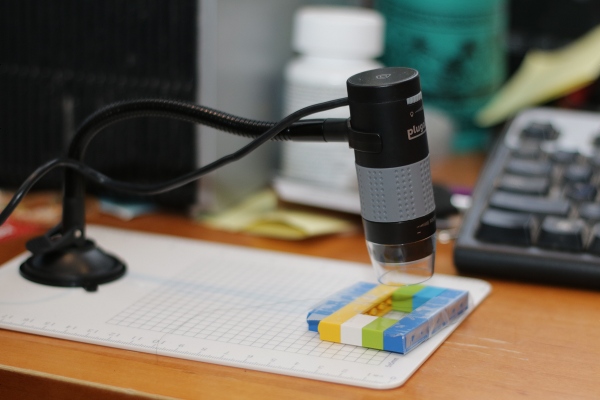There was a kerfuffle in academic social media a bit earlier this week, kicked off by an anonymous Twitter feed dedicated to complaints about students (which I won’t link to, as it’s one of those stunt feeds that’s mostly an exercise in maximizing clicks by maximizing dickishness). This triggered a bunch of sweeping declarations about… Continue reading Priority Expectations and Student-Faculty Conflict
Category: Education
Physics Blogging Round-Up: February
Another month, another collection of physics posts from Forbes: — Quantum Loopholes And The Problem Of Free Will: In one of those odd bits of synchronicity, a previous post about whether dark matter and energy might affect atoms in a way that allowed for “free will” was followed shortly by a news release about an… Continue reading Physics Blogging Round-Up: February
Reflections on Matter and Interactions
I’m teaching introductory mechanics for the umpteenth time, using the Matter and Interactions curriculum, as we have for a while. This is going to be my last time teaching out of M&I, though, because last year the department decided to switch to a different book. Starting this winter term, we’ll be using Halliday, Resnick and… Continue reading Reflections on Matter and Interactions
Teaching Evaluations and the Problem of Unstated Assumptions
There’s a piece in Inside Higher Ed today on yet another study showing that student course evaluations don’t correlate with student learning. For a lot of academics, the basic reaction to this is summed up in the Chuck Pearson tweet that sent me to the story: “Haven’t we settled this already?” The use of student… Continue reading Teaching Evaluations and the Problem of Unstated Assumptions
Advice for New Faculty, 2016
A couple of weeks ago, I was asked to speak on a panel about teaching during Union’s new-faculty orientation. We had one person from each of the academic divisions (arts and literature, social science, natural science, and engineering), and there was a ton of overlap in the things we said, but here’s a rough reconstruction… Continue reading Advice for New Faculty, 2016
Imaginary Syllabus: Science of Sports and Games
It’s one of those days where none of the stuff I probably ought to be writing seems even slightly appealing, so instead I’m going to do something frivolous and morale-boosting, namely think out loud about an imaginary course. Despite being on sabbatical, I do still check my work email, and have caught the edges of… Continue reading Imaginary Syllabus: Science of Sports and Games
Physics Blogging Round-Up: ARPES, Optics, Band Gaps, Radiation Pressure, Home Science, and Catastrophe
It’s been a while since I last rounded up physics posts from Forbes, so there’s a good bunch of stuff on this list: — How Do Physicists Know What Electrons Are Doing Inside Matter?: An explanation of Angle-Resolved Photo-Electron Spectroscopy (ARPES), one of the major experimental techniques in condensed matter. I’m trying to figure out… Continue reading Physics Blogging Round-Up: ARPES, Optics, Band Gaps, Radiation Pressure, Home Science, and Catastrophe
The Schrödinger Sessions II: More Science for More Science Fiction
As you probably already know, last year we ran a workshop at the Joint Quantum Institute for science-fiction writers who would like to learn more about quantum physics. The workshop was a lot of fun from the speaker/oragnizer side, and very well received by last year’s writers, so we’re doing it again: The Schrödinger Sessions… Continue reading The Schrödinger Sessions II: More Science for More Science Fiction
On Faculty Mentoring
One of the evergreen topics for academic magazines like Inside Higher Ed and The Chronicle of Higher Education is faculty “mentoring.” It’s rare for a week to go by without at least one lengthy essay on the topic, many of which recirculate multiple times through my various social media channels. The latest batch of these… Continue reading On Faculty Mentoring
Advice to the Past
Over at Scientific American, Amanda Baker has a story about what scientists say they would tell their younger selves. I reached out to eight of my colleagues who are currently in STEM fields and asked them a series of questions about their childhood interests in science, school experiences, and roadblocks that they faced on their… Continue reading Advice to the Past
